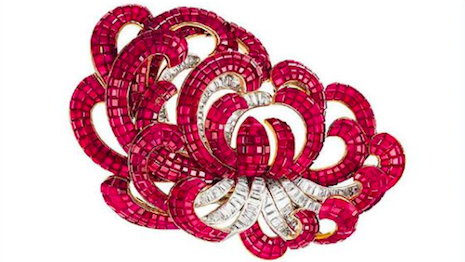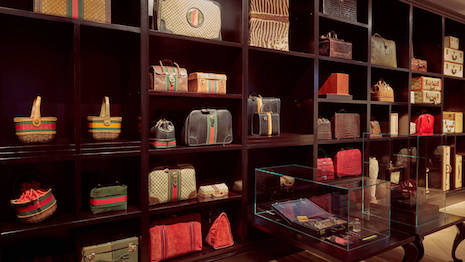 100 year old brands one year old brands each have unique advantages. Image credit: Van Cleef & Arpels
100 year old brands one year old brands each have unique advantages. Image credit: Van Cleef & Arpels
NEW YORK – There are two pillars of luxury that brands must be able to balance: heritage and modernity.
These two ideas make up the contradictory heart of luxury, which relies on the pedigree of the past while promising the hippest and most up-to-date styles. During a panel at the French-American Luxury Exchange held in New York on June 7, designers and executives from luxury companies both old and new discussed the balance between these two seemingly conflicting attitudes.
"I think creativity is more important than ever," said Laurent Claquin, head of Kering Americas. "We are lucky that our industry is driven by creativity and it's not just a buzzword."
Heritage and modernity
Luxury brands are built on heritage. Some of the most iconic brands in the world have reached that status after decades or even centuries of life. That long life comes with years of legacy to uphold, solidifying them as bastions of the luxury world.
At the same time, it is easy to become bogged down in tradition, becoming stagnant and not evolving with the times. This is the advantage that younger brands have over older counterparts who can start fresh.
"We started from scratch, from nothing," said Jack McCollough, co-founder of Proenza Schouler. "The difference between us and larger brands is that there's a vast history to pull from.
"We have to make it up along the way," he said. "They have vast resources to tap into, and we don’t have that."
Gucci is one of Kering's more prestigious brands. Image credit: Gucci
However, this comes at a price. These younger brands tend to not have the years of experience and brand recognition that some of the heritage brands do.
Additionally, having a long history gives brands years of work, traditions and trademarks to dip into as they design new collections in the future.
"For our new fragrance, we pulled out every collection we ever did and looked at the threads we had created and made our own kind of 15 year heritage," said Lazaro Hernandexz, co-founder of Proenza Schouler. "The Americanness was important for us.
"With the lack of heritage, we had to live our lives and see as much as we can," he said.
Striking a balance
Chasing after the latest trend may be appealing for luxury marketers in an ever-changing world, but doing so can risk the loss of a brand’s core identity.
For Diego Della Valle, chairman and CEO of Tod’s, luxury brands’ strengths lie in their legacy and the heritage they build up over many years. Speaking at the Financial Times Business of Luxury Summit on May 21, Mr. Della Valle warned that brands can dilute that legacy if they reinvent themselves too drastically and too frequently (see story).
But legacies are still important. To build a brand that will stand the test of time, little decisions and short-term effects are important, but not as much as establishing a long-term identity.
Proenza Schouler's co-founders spoke about the challenge of being a new brand. Image credit: Proenza Schouler
In a new book, called "Legacy in the Making," authors Mark Miller and Lucas Conley lay out strategies for brands to build long-lasting legacies, something that is particularly relevant for luxury brands. At an event hosted by Team One in New York on April 26, the two authors spoke about how numerous brands they spoke to were aware of this problem (see story).
For the panelists, balancing between heritage and modernity is key to creating a strong, long-lasting luxury brand.
"It's true that there are many ways to talk about heritage," said Alain Bernard, president and CEO of Van Cleef & Arpels Americas. "A good example is the School of Jewelry Arts we run.
"Theres nothing more old-style than a school," he said. "It’s a school for learning to create jewelry, and I would qualify it as very patrimonial and historical.
"The way we do it though is more modern, using digital assets. The content is heritage-based but the way to talk about it is definitely modern."


